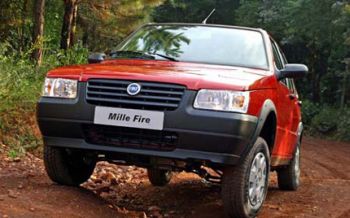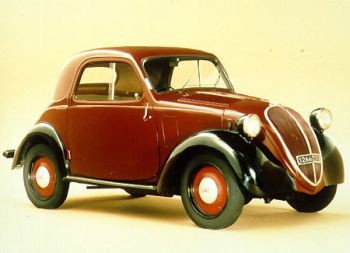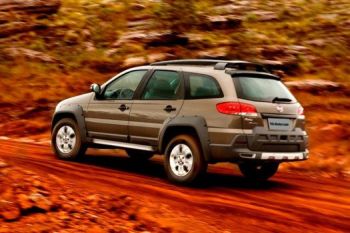 |
|
Now being developed in Brazil, the sub-B
"new Uno" will replace the current Uno which
is still built in Brazil (above, in Mille
Way format) and is the national market's
entry-level car of choice. In fact Fiat
Automóveis envision the original Uno
remaining in production until 2014. |
|
|
|
 |
|
Kicking off the new 'low-cost' brand's
range, will be a tiny urban car, presently
dubbed the 'Topolino' which will be a
spiritual successor to this historic model
9above) and will replace the 'Seicento'
(which is still in production in Poland and
sold on certain European markets including
Italy). |
|
|
|
 |
|
Launched in 1996 the B-segment 'Project 178
World Car' Palio has seen four comprehensive
facelifts and has spawned a series of
derivatives based on its architecture,
including a sedan, estate (above, in
'Adventure' format) and pick-up. |
|
|
|
Fiat CEO
Sergio Marchionne has confirmed that the group is
pressing forward at pace with its ambitious plans to
launch a new standalone low-cost brand, eventually comprising of
three new models, by 2010, taking advantage of the
current economic climate that is seeing consumers
seeking smaller, cheaper and more efficient cars.
In an
interview with Automotive News Europe this week,
Marchionne said he wanted Fiat to become the Wal Mart of
the automobile industry. "I am looking at the
fast-changing automotive world and am saying: "Which
part of the chess board do I want to be on?" he told
ANE. "I want to become a serious player in the
low-cost-cars corner of the chessboard at the speed of
light."
Marchionne
has always been an avowed admirer of Renault's low-cost,
Romanian-based Dacia brand (bought by the French
carmaker in 1999) that has seen its sales climbing
impressively ever since the all-new Logan was introduced
in 2004. Other major carmakers are rushing forward with
plans to introduce standalone cheap brands.
Three new
models, all currently pressing through the development
phase, will form the basis of the new low-cost brand.
Project 326 and 327 are now being developing by Fiat
Automóveis in Brazil. Project 326 will replace the
current Palio model which itself was the much-vaunted
first member of the last attempt by Fiat to develop a
"world car" for developing markets. Launched in 1996 the
B-segment 'Project 178 World Car' family's Palio has
seen four comprehensive facelifts to date, and it has
spawned a series of derivatives based on its
architecture, including the Siena (sedan), Palio Weekend
(estate) and Strada (pick-up). The Palio is currently
assembled in Brazil, Turkey, North Korea and India; it
has also been built in China and South Africa, and is
set to be manufactured in Russia.
The second
member of the new low-cost brand will be a new sub-B
segment (B compact) model, dubbed the 'New Uno'. Also
being developed in Brazil, the new Uno will replace the
current Uno which is still built in Brazil and is the
national market's entry-level car of choice. In fact
Fiat Automóveis envision the original Uno, which is now
called the Mille, remaining in production until 2014.
A third
model will kick off the low-cost range, this tiny urban
car, presently dubbed the 'Topolino', will be a
spiritual successor to this historic model and replace
the 'Seicento' (which is still in limited production at
the Tychy factory in Poland and sold on certain European
markets including Italy). The 'city' car will be built
on a shortened version of the highly versatile Panda
platform and will use a range of engines including the
brand new 900cc SGE unit; it will be pitched at less
than 7,000 euros. Upmarket versions are expected to be
restyled and badged by Fiat and Lancia.
News though
in the ANE article is that the new low-cost brand
will be sold across Western Europe to slot into the void
left by the current economic downturn. This also means
that the new C-segment fiat Linea sedan, which several
Western European importers have expressed keen interest
in selling, will be considered to be added to this
range. The Topolino and 'new Uno' (both of which will be
restyled for the European markets from the Brazilian
versions) are scheduled to be built at the former
Zastava factory in Serbia, while the joint-venture Tofaş
plant at Bursa in Turkey
(which currently manufactures the Palio and Linea) is
also being considered as a base. All three of these
models will arrive between 2010 and 2012.
|